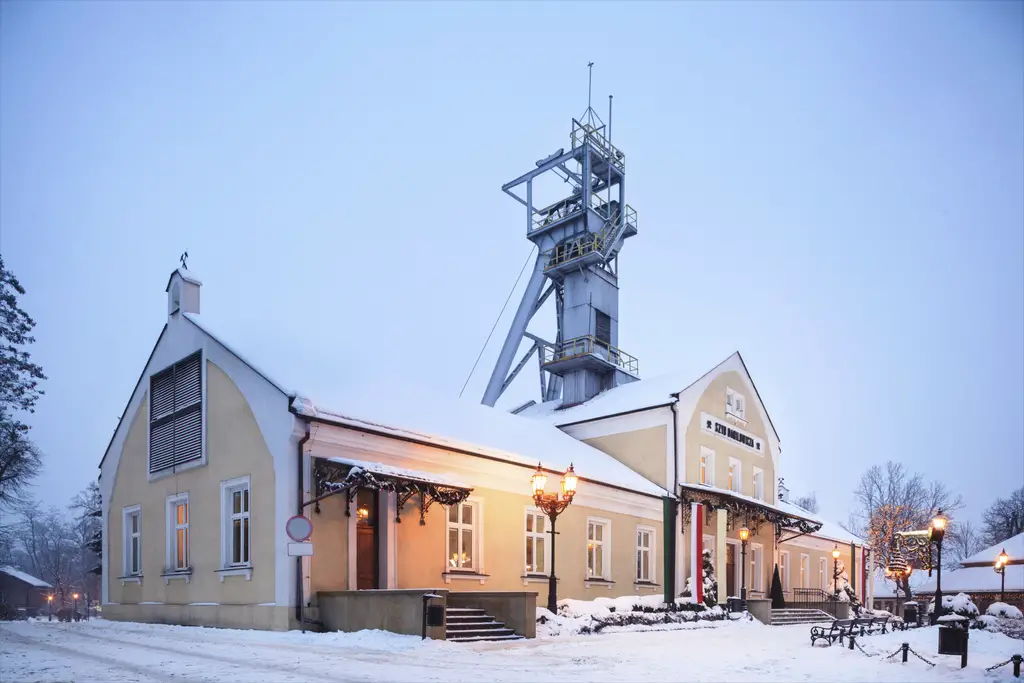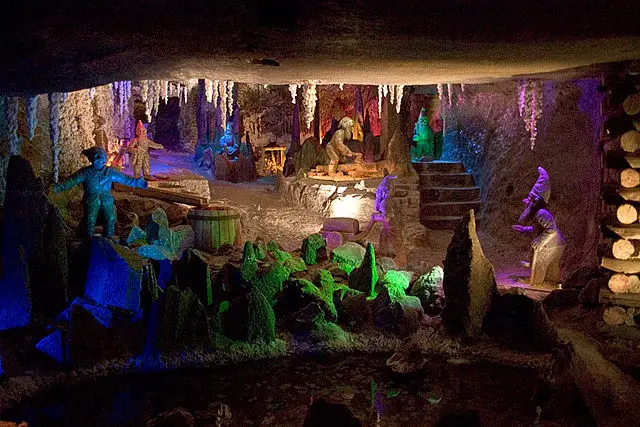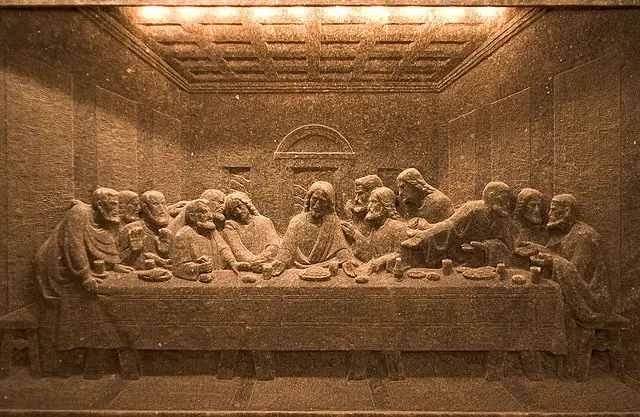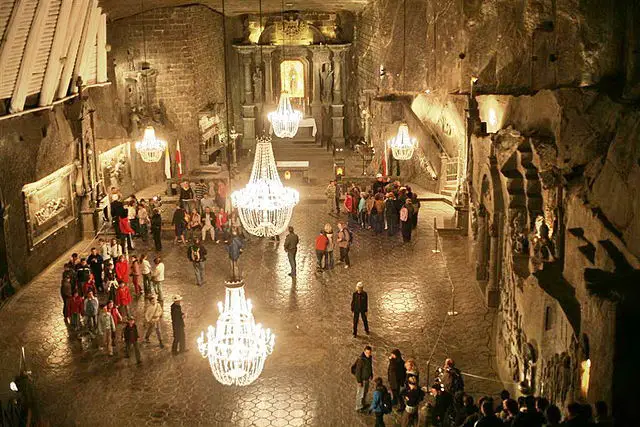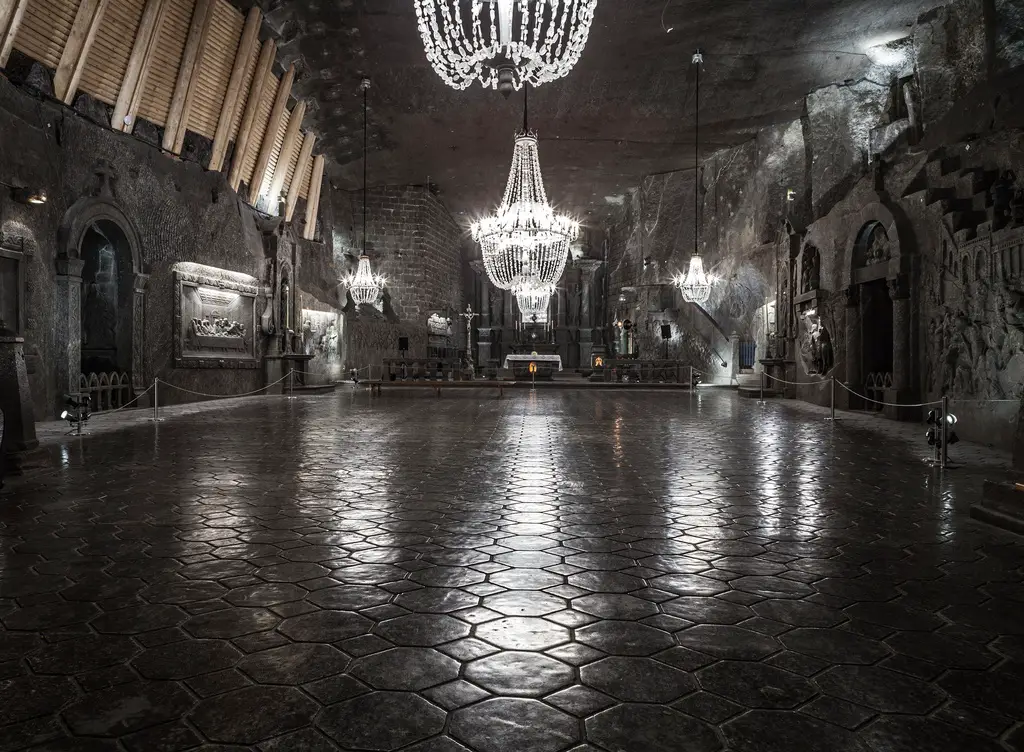The Wieliczka Salt Mine in southern Poland is visited by over one million tourists per year, is one of the most valuable monuments in Poland, and has been a UNESCO World Heritage Site since 1978. The crown jewel in the Wieliczka Salt Mine is the impressive Chapel of St. Kinga which is sculpted entirely in salt.
The Wieliczka Salt Mine began production in the 13th century, and at one point in its history, it produced one-third of Poland’s income. The mine has nine levels, is 1,000 feet deep, and has over 100 miles of tunnels. During the eight centuries producing salt, miners began to carve into the walls of the mine. They first started carving figures into the salt, and when they wanted a place to pray, they began to carve chapels. There are over 20 chapels in the mine, and the most famous and largest underground chapel in the world is the Chapel of St. Kinga.
Kinga was the daughter of King Bela IV of Hungary in the 13th century. She was in an arranged marriage to Boleslaw V of Poland and they took a vow of chastity. When her husband ascended the throne she became a princess. Her connection to the Wieliczka salt mine came from a legend. She was said to have thrown her engagement ring in the Maramures salt mine in Hungary, and it was later dug up and found with the salt deposits in Wieliczka.
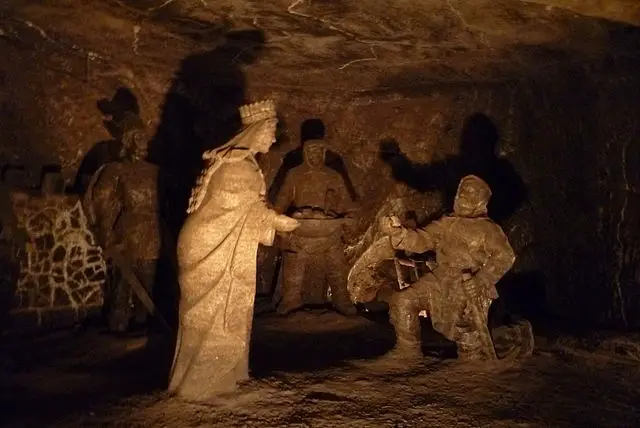
After her husband’s death, Kinga sold everything she had and gave her money to the poor. She even joined a monastery until her death in 1292. The Chapel of St. Kinga commemorates her, and there is an area in the chapel depicts a miner finding her ring. She became the patron saint of salt miners. The Chapel of St. Kinga took 67 years to carve from 1896 to 1964 at a depth of 350 feet. Everything in the chapel is salt, including the floor, walls, ceiling, sculptures, and the chandeliers.
Only a small portion of the mine is open to tourists. To enter the mine, one must walk down 378 wooden steps. Inside there are statues, chapels, corridors, and an underground lake to discover. When the tour is done, visitors take an elevator to the surface.
Commercial salt mining was ceased in 1996 because of low salt prices and flooding. Even today, the greatest threat to the mine comes from water leaking in.
